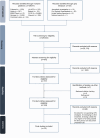Corporate political activity of the food industry in the development of food policies in Latin America and the Caribbean: a narrative review of the current literature
- PMID: 40855446
- PMCID: PMC12379346
- DOI: 10.1186/s12992-025-01136-1
Corporate political activity of the food industry in the development of food policies in Latin America and the Caribbean: a narrative review of the current literature
Abstract
Background: In Latin America and the Caribbean (LAC), the commercial interests of the food industry dominate the food environment, jeopardising current efforts to improve the health and nutrition of the population. This study aims to document action strategies, mechanisms and practices (ASMP) of corporate political activity (CPA) employed by the food industry to obstruct public health, food, and nutrition policies in LAC countries. A narrative review was conducted based on publicly available data sources from scientific and grey literature across the 33 countries in the LAC region. Data were collected on the food industry's CPA within the health, food and nutrition policy cycle. For the analysis, the framework developed by Ulucanlar et al. (2023) to categorise ASMP of CPA, together with the policy cycle model proposed by Knill and Tosun (2008), was applied.
Results: Documents published from January 2018 to October 2024 were examined using search strategies across multiple databases and citation tracking. In total, 76 documents from 24 countries in LAC were included in the analysis. The majority of documents originated from Mexico (n = 22, 28.9%) and Brazil (n = 12, 15.8%), with a notable concentration published in 2022. Front-of-pack food labelling and taxation of sugar-sweetened beverages were the policies with the most documented CPA evidence. The most frequently identified action strategy was accessing and influencing policy making (n = 69, 90.8%), primarily in the policy cycle formulation, adoption and implementation phases. While the CPA mechanisms and practices varied by country, more than 900 examples of practices were documented throughout the review.
Conclusions: Despite the limited availability of public information in LAC -particularly in Central America and the Caribbean- this review identified a broad range of ASMP used to influence health, food and nutrition policy processes. These findings highlight the need for a multifaceted response to counteract the harmful effects of the food industry's influence in the LAC region and underscore the urgency of safeguarding public health. Establishing robust legal frameworks to regulate conflicts of interest and to ensure greater transparency throughout the policy cycle are critical steps toward creating healthier food environments across the region.
Keywords: Corporate Political Activity; Food Industry; Food Policy; Latin America and the Caribbean; Non-communicable Diseases; Ultra-processed Products.
© 2025. The Author(s).
Conflict of interest statement
Declarations. Ethics approval and consent to participate: The Ethics, Research and Biosafety Committees of the Mexican National Institute of Public Health evaluated and approved this study (CI: 1925). Consent for publication: Not applicable. Competing interests: The authors declare no competing interests.
Figures



References
-
- Moubarac J, Parra D, Cannon G, Monteiro C. Food Classification Systems Based on Food Processing: Significance and Implications for Policies and Actions: A Systematic Literature Review and Assessment. Curr Obes Rep. 2014Jun;3(2):256–72. - PubMed
-
- Moubarac J, Batal M, Louzada M, Martinez S, Monteiro C. Consumption of ultra-processed foods predicts diet quality in Canada. Appetite. 2017;108:512–20. - PubMed
-
- Santivañez T, Granados S, Jara B, Chibbaro A, Herrera M. Reflexiones sobre el sistema alimentario y perspectivas para alcanzar su sostenibilidad en América Latina y el Caribe. Santiago (CL): Oficina Regional para América Latina y el Caribe, Organización de las Naciones Unidas para la Alimentación y la Agricultura (FAO); 2017. Available from: https://openknowledge.fao.org/handle/20.500.14283/i7053es. Cited 24 Oct 2024.
-
- Monteiro C, Moubarac J, Cannon G, Popkin B. Ultra-processed products are becoming dominant in the global food system. Obes Rev. 2013;14(2):21–8. - PubMed
Publication types
MeSH terms
LinkOut - more resources
Full Text Sources

